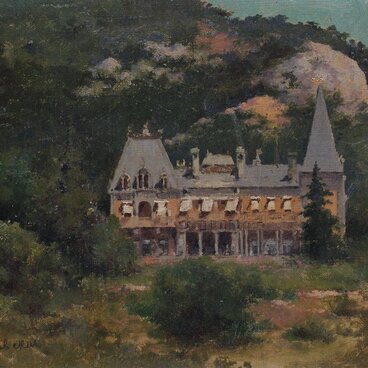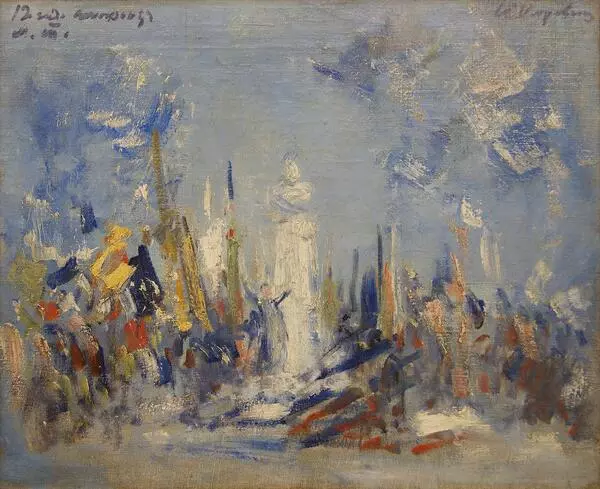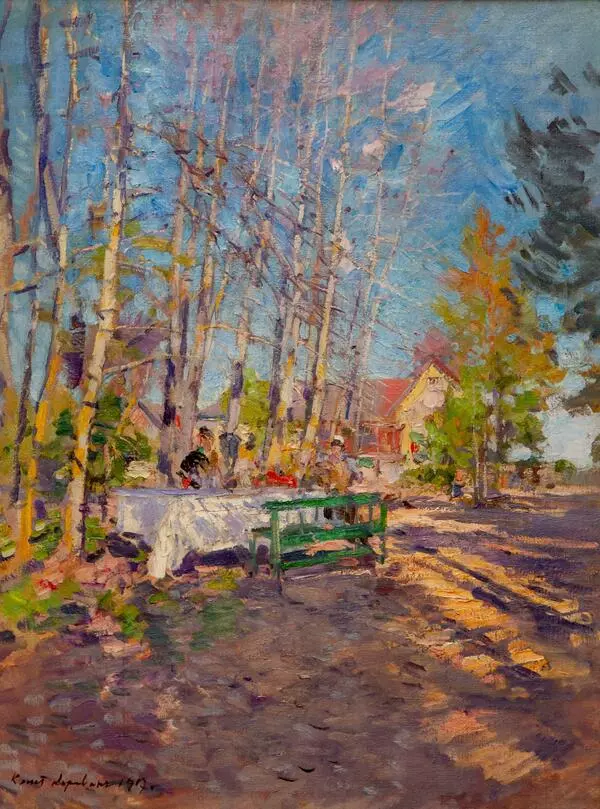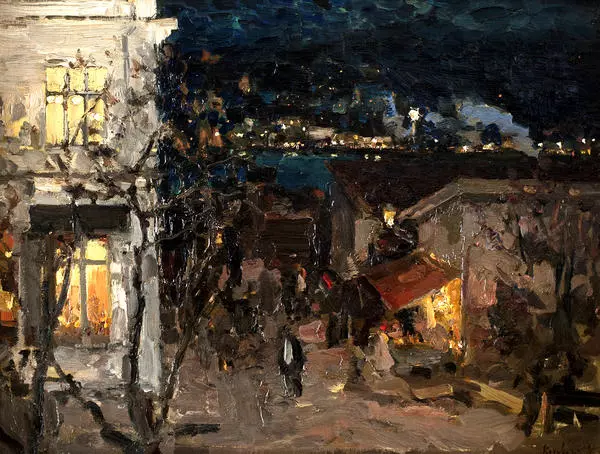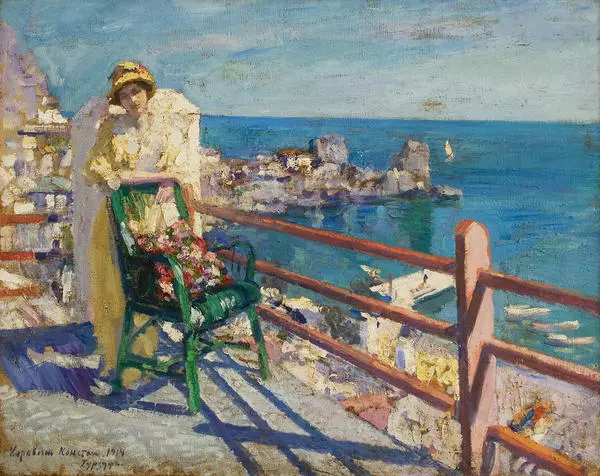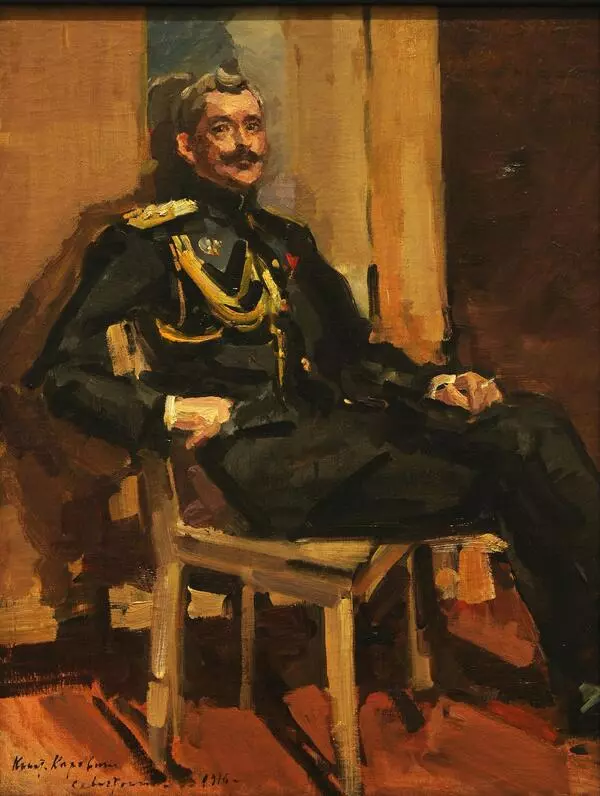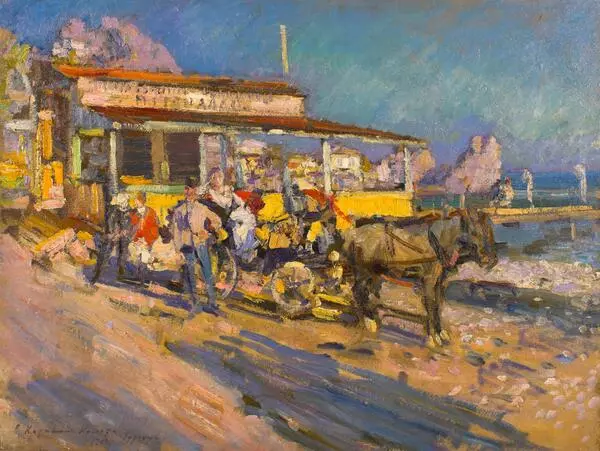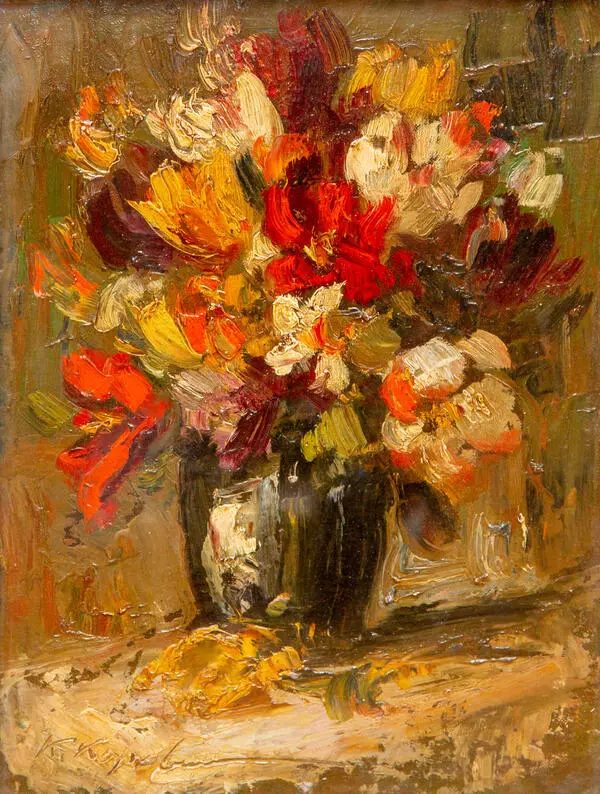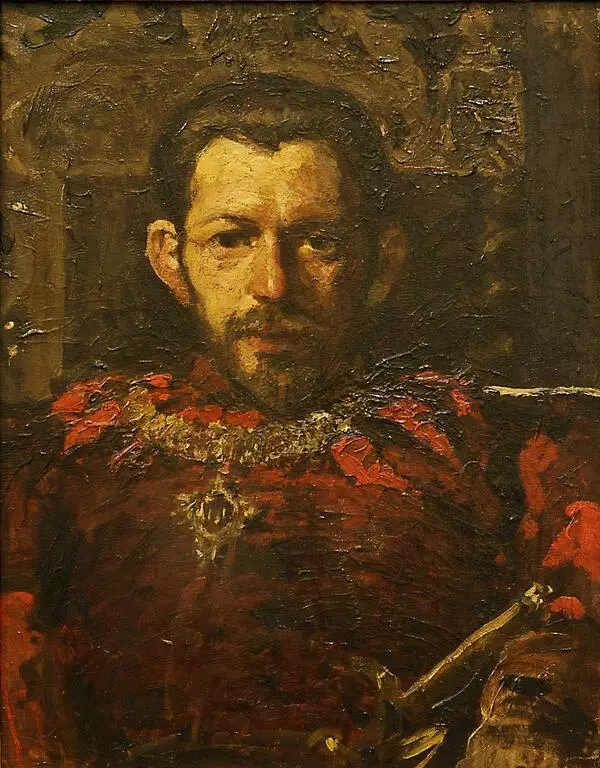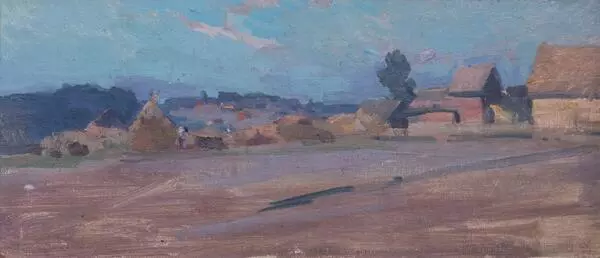The exhibition of the Sevastopol Art Museum named after Mikhail Pavlovich Kroshitsky features the still life “Asters and Tomatoes” painted by the famous Russian artist Konstantin Alexeevich Korovin in 1919. The work impresses with its unrestrained, exuberant temperament, the dashing brushwork, and the lavish colorful imagination. It has nothing of the calm grace, calibrated elegance, and lyrical admiration, characteristic of the works of artists of the Mir Iskusstva (World of Art) association.
Throughout his career, Konstantin Korovin painted lush still lifes. In Crimean paintings the master depicted bouquets at the window, in the interiors, and on the balcony of the Salambo dacha; those were mostly tea roses. Combining flowers and fruits, he inscribed the compositions in the “big, beautiful world of the sun”. In the still life from the Sevastopol collection, one can clearly see an important feature of “Russian Impressionism” — its decorative nature. Korovin, in contrast to French painters, did not “dissolve” objects, but instead emphasized their materiality; as a gourmet, he “savored” their vitality, the “tangibility” of their flesh, admired the intense color and beauty of confidently sculpted volumes.
After the Russian Revolution of 1917, Korovin,
along with the artists Arkhipov and Rozhdestvensky, left starving Moscow for
the Tver Governorate. Together with his family, he settled near Lake Udomlya in
the estate Ostrovno, which belonged to the landowner family of Ushakovs, where,
many years before that, his friend Isaac Levitan painted his legendary picture
“Above Eternal Peace”. Besides, that was the place where a love drama had once
broken out, which Anton Chekhov repeatedly described in his works. Later, the
painters Bialynitsky-Birulya, Moravov, Bogdanov-Belsky, and others stayed in
the same house and lived there for a long time. Konstantin Korovin was a
teacher at the State Free Art Workshops, formerly known as the Moscow School of
Painting, Sculpture and Architecture. Life in Udomlya was much more affordable,
and the artist would spend winters there until as late as the beginning of
1920, visiting the school only occasionally. Konstantin Korovin fished from a
local lake, wrote hunting stories, and, of course, practiced painting.


